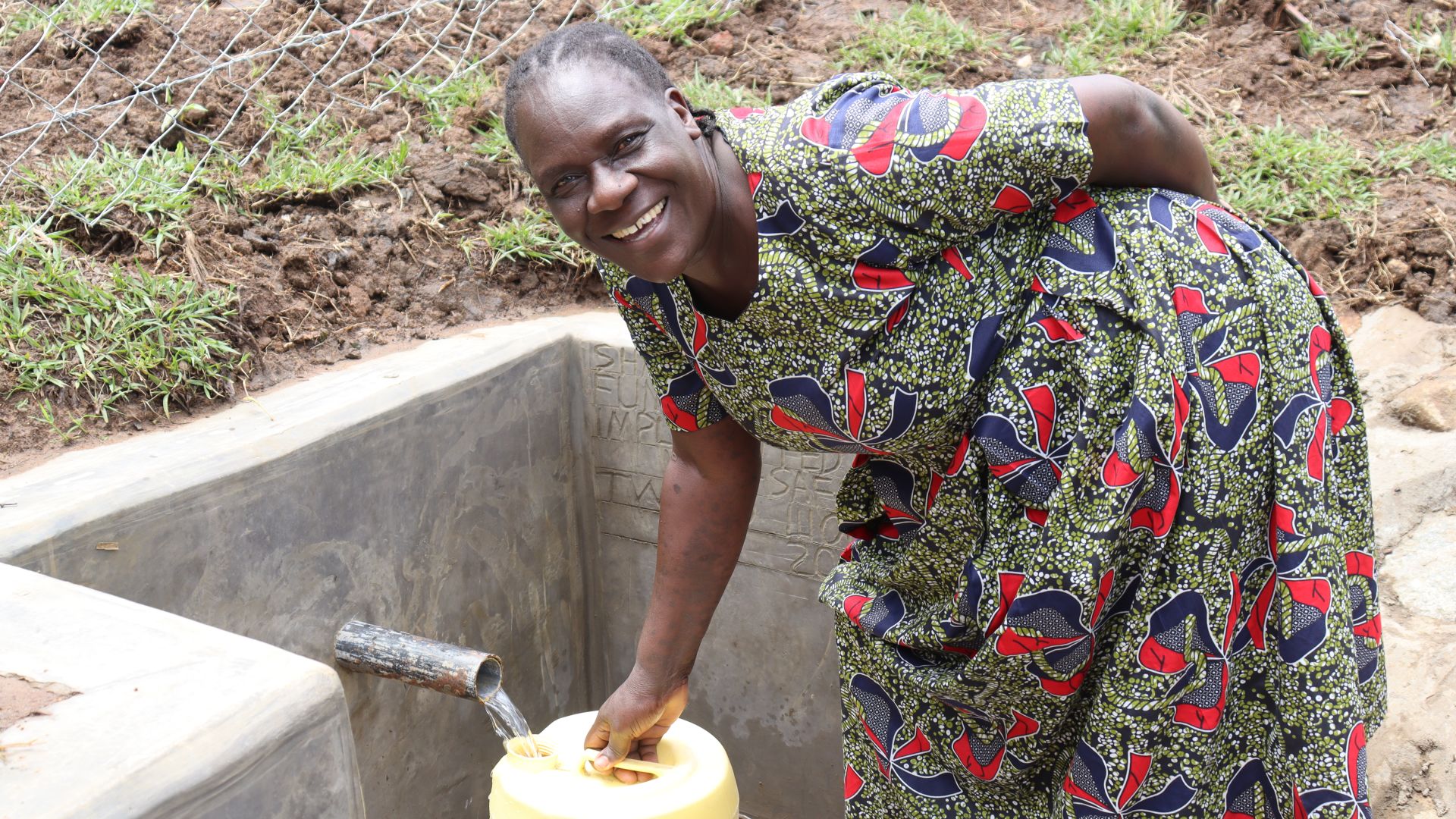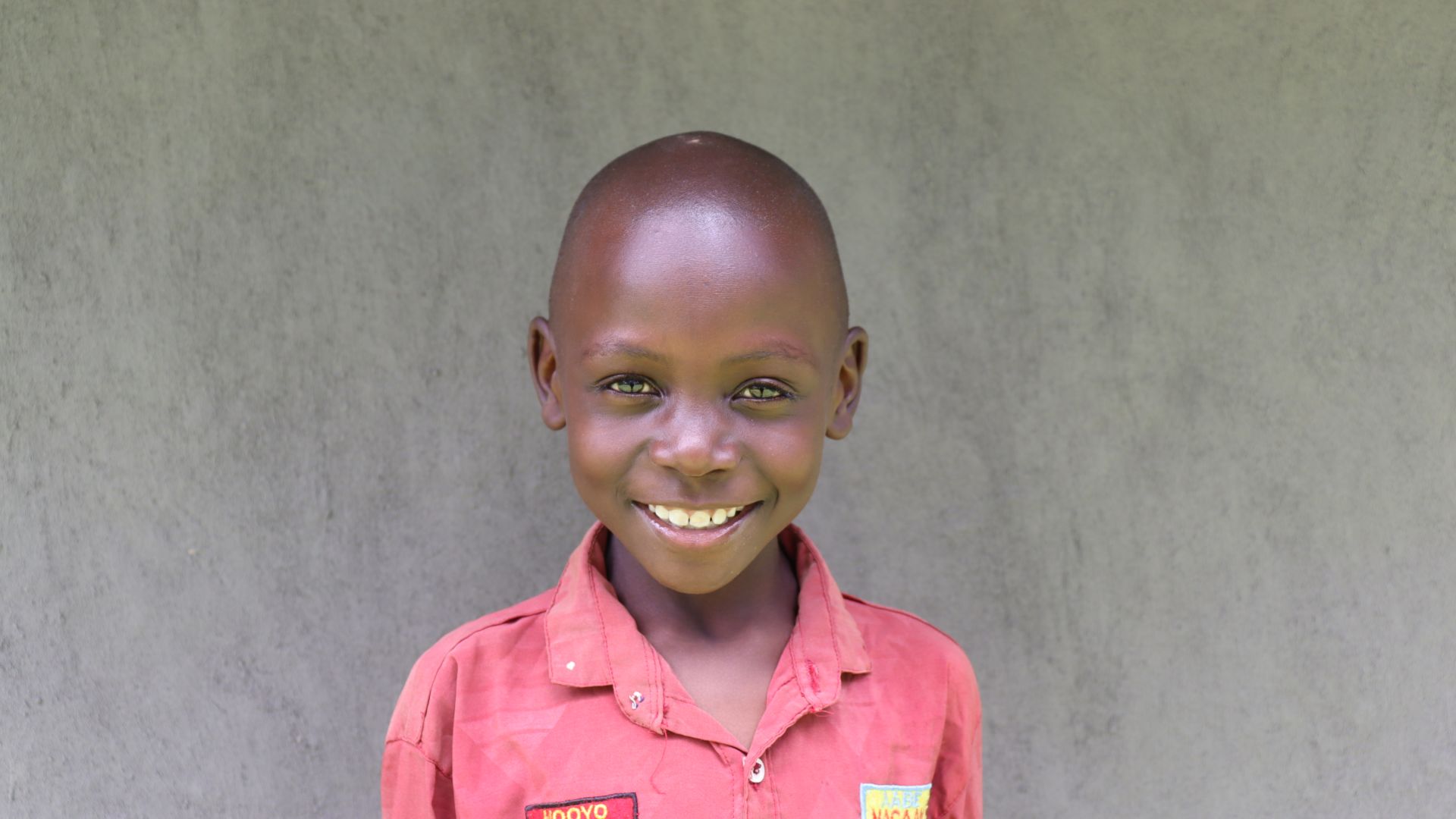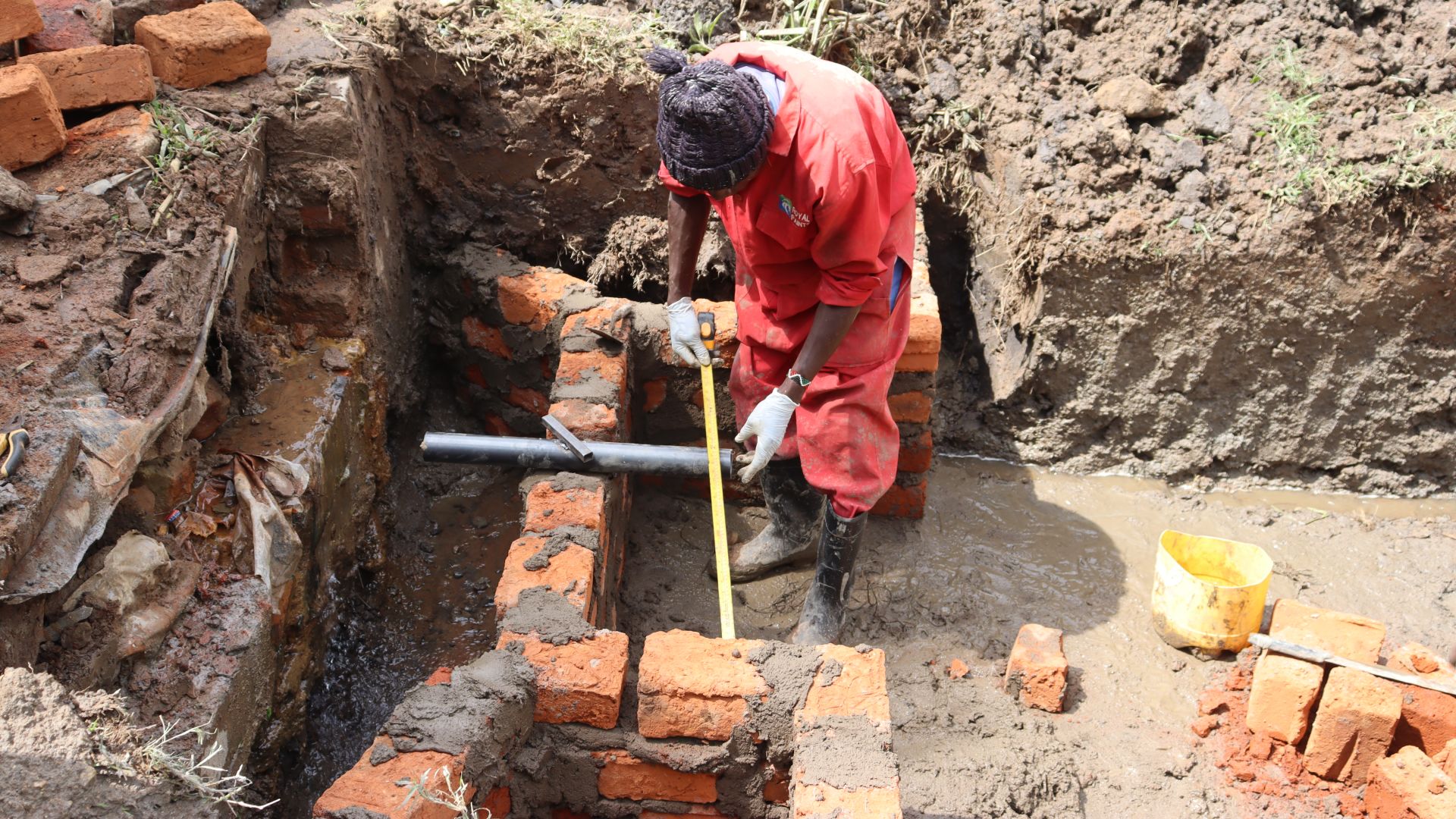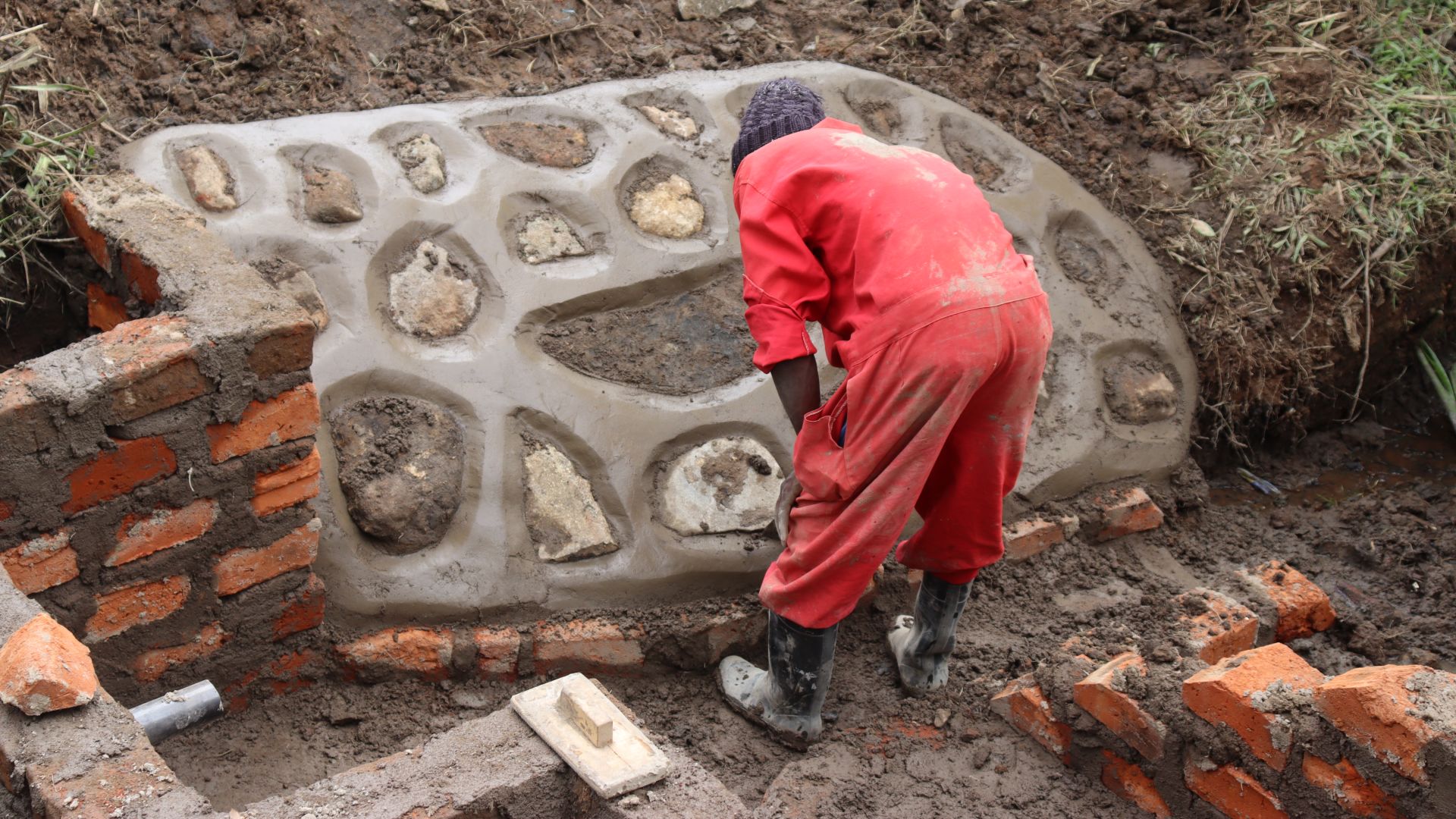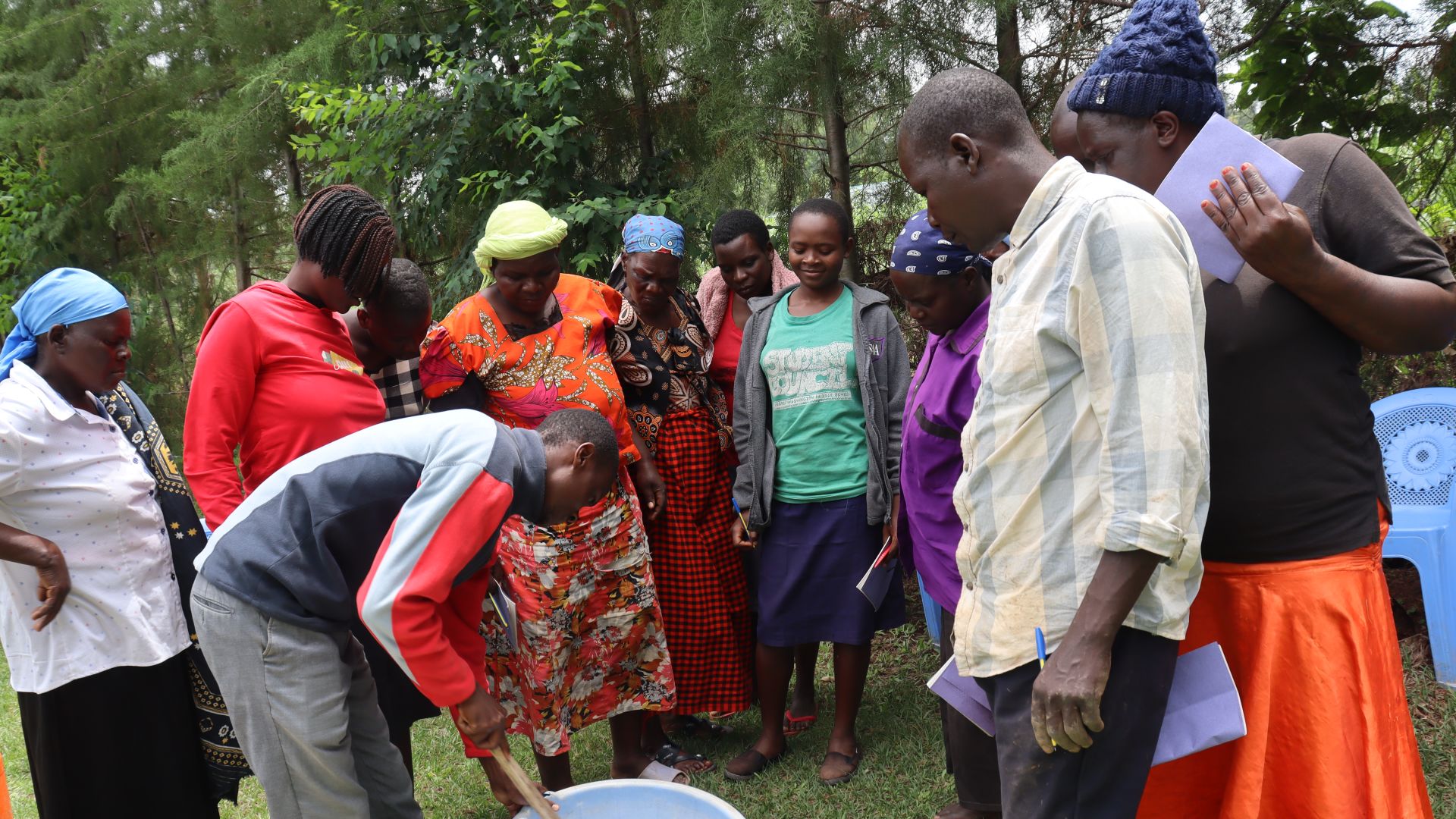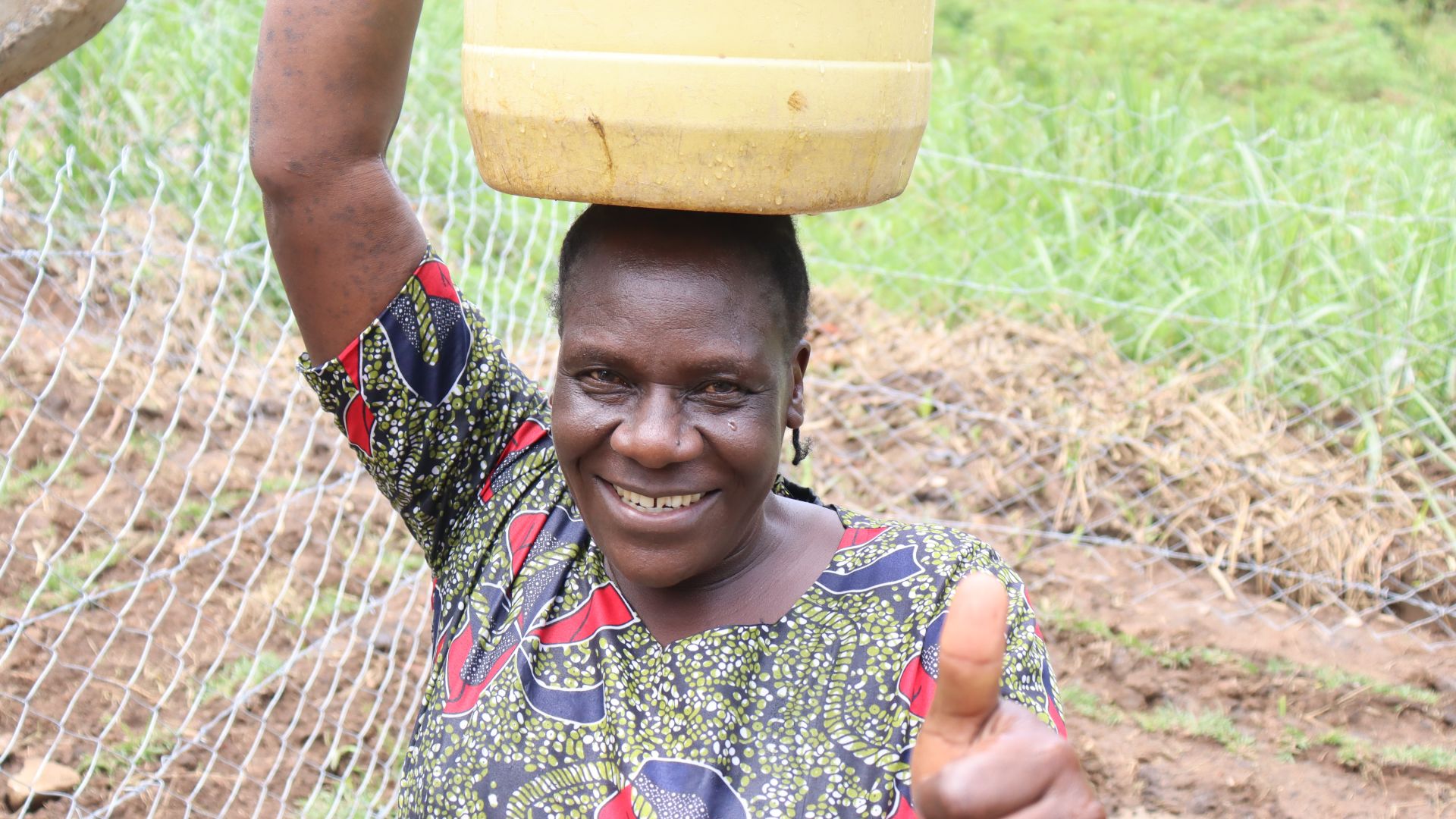In the Mukhulutsi Community, the 200 residents have only one water source: the distant and dangerous Shamboko Spring, which steals their time and needs to be repaired.

Field Officer Christine Masinde described the community's water crisis. "This spring is the only reliable source of water in this community. As a result, water users have to face the burden of struggling to get their share of this precious commodity. They end up not getting enough water according to their needs. This has led [to] compromised hygiene and sanitation practices."
Eight-year-old Elvis has felt the pain of collecting water at their spring, quite literally.

Elvis.
"The path that leads to the spring is very steep, posing safety concerns to everyone, especially children. A while back, I slipped and fell while carrying water. I was not hurt badly, but it could have been worse. Since then, my mother does not allow me to go to the spring alone. Queuing at the waterpoint wastes a lot of my time. In worst cases, instead of people lining up, they chose to struggle to fetch water without proper order. This leads to wastage of more time and sometimes injuries as people push each other," said Elvis.

Elvis collecting water.
The long lines waiting to collect water cause tensions to run high, and the anxiety about tasks being left unfinished causes friction within the community. Elvis is used to being pushed to the back of the line because he is a child.

Community members waiting for their chance to collect water.
"Though it feels bad, I know adults have many responsibilities to take of; therefore, I allow them to fetch water first, then I do [it] when my time comes. This affects my school work, but I have no alternative to this problem," shared Elvis.

Elvis.
"I try my best to arrive at school early after fetching water in the morning, but I do not concentrate well in class due to exhaustion. My grades are not appealing, but I will not give up on my dream of becoming a doctor. I believe things will be better."
"I would like to be a doctor when I grow up. I believe with the right environment, and hard work, I will definitely achieve my dreams."
With the right tools, like easy access to safe water, the sky is the limit for Elvis so he can prioritize his education and pursue his dreams.

Elvis and other community members walking home.
"Protecting this spring will reduce the time and effort required to access this water point, particularly for women, children, and the elderly. The quality of water will improve, which in turn will impact the health of its users positively," Christine added.
Steps Toward a Solution
Our technical experts worked with the local community to identify the most effective solution to their water crisis. They decided to safeguard the existing flowing spring.
Spring Protection
Springs are natural water sources that originate from deep underground. As water travels through various layers of the earth, it undergoes a natural filtration process, making it cleaner and safer to drink. To protect these spring sources from contamination, we construct a waterproof cement structure around layers of clay, stone, and soil. This design channels the spring water through a discharge pipe, facilitating easier, faster, and cleaner water collection.
Chlorine Dispenser
As an extra measure towards water quality safety, uniquely engineered chlorine dispensers are installed at all of our spring protection projects so community members can treat their water with pre-measured doses of chlorine. The chlorine treats any residual contamination and stays active for two to three days, ensuring water stays safe to use even when stored at home. Chlorine delivery and maintenance of the dispensers are part of our ongoing community support.
Community Education & Ownership
Hygiene and sanitation training are integral to our water projects. Training is tailored to each community's specific needs and includes key topics such as proper water handling, improved hygiene practices, disease transmission prevention, and care of the new water point. Safe water and improved hygiene habits foster a healthier future for everyone in the community. Encouraged and supported by the guidance of our team, a water user committee representative of the community's diverse members assumes responsibility for maintaining the water point, often gathering fees to ensure its upkeep.
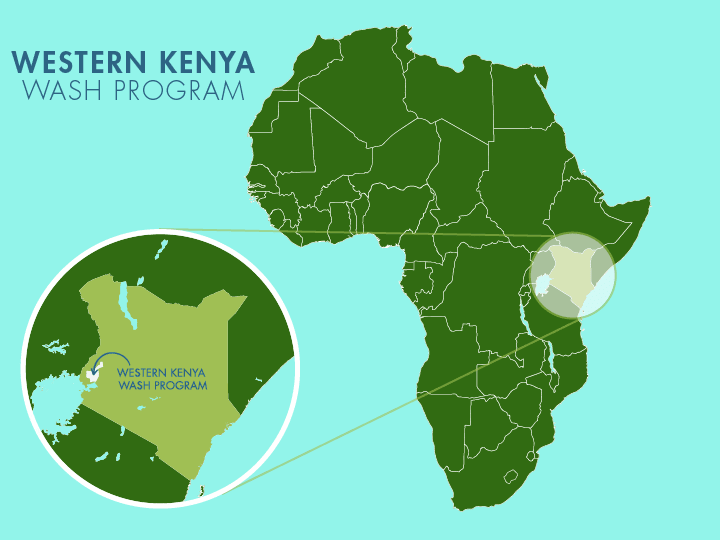
 Protected Spring
Protected Spring
 Rehabilitation Project
Rehabilitation Project












